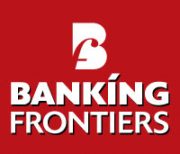V. Raghuraman: How many more branches and ATMs are you planning this fiscal?
T.K. Shrivatsava:In the financial year 2015-16, Syndicate Bank has plans for opening 355 branches. Of this, 19 branches have already been opened. As per the plan of one branch one ATM, we intend to open 355 onsite ATMs this year. The network comprises 3570 branches and 3558 ATMs.
How many cash deposit machines have you deployed and what is the plan this year?
At prsent, we have 100 CDMs. Of these, 91 are spread out throughout the country. As for the plan for this year, we will be setting up 100 more CDMs. Order for the machines have already been placed and we are waiting for their delivery.
What are the measures you propose to initiate to increase the share of NRI deposits?
We have advised all the branch managers to contact their NRE account holders and customers in this regard. Besides, e-mails are regularly being sent out to them giving details of our deposit schemes. With a view to attract customers’ attention, we have, in a novel fashion, displayed our deposit products in the luggage trolleys at the major airports.
With interest rates falling, what are your plans to increase CASA deposits, which presently constitute only 27.28% of bank’s total deposits, as of end June 2015?
The bank always accords top priority to attract CASA deposits. With this end in view, we periodically launch CASA campaigns and announces incentives to the branches and the staff engaged in this task. Similarly, we have unique CASA products such as Synd Junior Millionaire for minors, Synd-smartSHE exclusively for women and Synd-smartGEN for all. These products are attractive in the sense that there is an extra rate of interest over the usual rate. We hope that these would help improve our CASA figure.
How is the bank connecting with the youth?
With a view to connecting with the youth or present-day generation of customers, we offer several products. Some of them are tab banking, internet banking, missed call banking and other apps like Synd e-passbook app and Synd guide app. These are offered to the younger generation clientele with a view of serving them better. Through these initiatives, we do hope to provide them more information and service.
What is your strategy vis-à-vis the new payments banks?
For quite some time now, we have been catering to the needs of the small deposit holders through schemes such as pigmy deposit scheme. This, incidentally, has, over the years, become very popular. The new payment banks may, however, succeed in taking away a portion of savings deposits. After they start operations and working out the modalities, we may try to have a tie-up arrangement with them for serving the small account holders. Such a step could help save both cost and time and it could end up in a win-win situation for all.
India is now becoming a country of start-ups, with the brightest minds actually starting off innovative new ventures. What business opportunity do you see among start-ups for PSU banks?
Generally, the start-ups begin their activities at a lower scale and mostly they all fall under the category of small and medium sector enterprises. It is only when they gather momentum that they scale up their operations. Having understood this, the bank has ventured into targeting the aforesaid small and medium sector enterprises, including the start-ups, as a thrust force for growth of its credit portfolio. Under SME and medium sector, the bank is funding all such viable, good proposals and do envisage a very good opportunity for enhancing its advances portfolio.
Towards achieving this objective, we have embarked on capacity building at field-level (branches) and regional offices by imparting training to a large number of officers in the junior and middle-level cadres from different centers across the country. On its part, the bank sees very good business opportunity in financing these start-ups.
Can you talk about the improvements made in your credit rating and risk management systems? What new improvements are planned for the next 12 months?
During the last 12 months, we have introduced several improvements in credit rating and risk management systems:
Credit Rating: (i) The bank has introduced separate retail score card model for vehicle loans, (ii) It has adopted the simple method of rating for micro and small borrowers having an exposure of Rs.1 crore or below, in line with the RBI guidelines (iii) We have adopted the new rating methodology for the Synd mortgage and Synd rent receivables.
Risk Management: (i) The bank has computed profitability of default (PD) of 5 years as on 31.03.2015 which is required for movement towards IRB approach. (ii) As per the revised guidelines of the RBI, bank has undertaken updation of ICAAP policy and stress test policy. It has started the assessment as per the revised policy very recently, from June 2015. (iii) The bank has rolled out operational risk management software in October 2014 for effective and timely collection and reporting of operational risk loss incidents and taking appropriate measures at the right time. (iv) As per the new RBI guidelines, the bank has implemented the computation of liquidity coverage ratio and has been submitting the same to RBI from January 2015. (v) RBI has selected the bank for risk-based supervision (RBS) as on 31-03-2015. It has furnished the tranche 1 and tranche 1A data in respect of 31-03-2014 and 31-03-2015. (vi) The bank has started providing the incremental provision and capital on the un-hedged foreign currency exposure of the borrowers from June 2014.
New improvements planned for the next 12 months are as follows: (i) The bank is in the process of moving to combined rating. (ii) Validation of internal rating models to be undertaken. (iii) File the application of intent with RBI to move to advanced measurement approach with assistance of consultants. (iv) Consortium of banks for credit and operational risk data exchange (CORDEX) has to share external loss data with bank. (v) To compute value at risk (VaR) in the ORMS software based on the historical loss data and scenario analysis. (vi) The bank is in the process of adopting the pricing methodology based on risk perception of borrowers. (vii) The bank has acquired the system for scientific transfer pricing mechanism and the implementation targeted for completion by 31 October 2015.
What are the 3 top sectors that the bank has exposure now? What do you think will be the top 3 sectors that the bank will have exposure 24 months from now?
The following are the top 3 sectors where the bank is having maximum exposure as on 30 June 2015: (i) Infrastructure (21.84%), (ii) NBFC (15.74%) and (iii) MSME (14.93%). In the next 24 months, we expect increase lending to the infrastructure as well as the MSME sectors. Funding will also continue to the NBFC sector as well.
Have you recovered any big amounts from the NPA customers?
In the 3 months of May, June and July 2015 itself, we have recovered a sum of Rs65.90 crore.
V. Raghuraman, [email protected]







